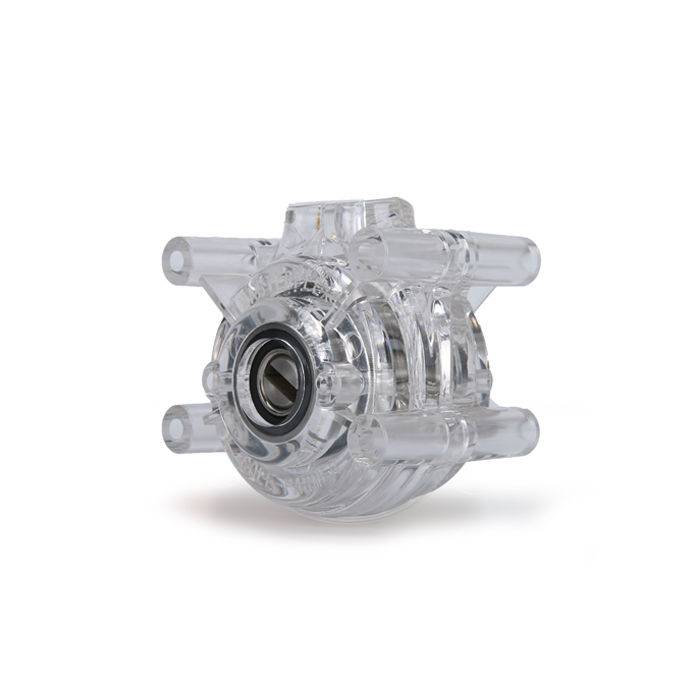Double Head Peristaltic Pump: Dual Functionality for Enhanced Fluid Handling
Introduction
Peristaltic pumps are renowned for their accurate and contamination-free fluid handling capabilities. Among the variations available, double head peristaltic pumps offer unique advantages by incorporating two pumping heads into a single unit. In this article, we will explore the functions and working principles of double head peristaltic pumps, highlighting their benefits and applications in various industries.
Function and Design of Double Head Peristaltic Pumps
A double head peristaltic pump consists of two separate pumping heads positioned side by side within a single pump enclosure. Each pumping head operates independently and can be controlled individually or synchronized to work together. The primary functions of a double head peristaltic pump are:
- Simultaneous Transfer of Multiple Fluids:
The dual pumping heads allow for the simultaneous transfer of two different fluids or solutions. This capability is particularly useful in applications where multiple fluids need to be accurately delivered or mixed in precise ratios. By utilizing a double head peristaltic pump, researchers and technicians can streamline processes, reduce setup complexity, and enhance overall efficiency. - Continuous Flow and Redundancy:
In certain scenarios, a continuous and uninterrupted flow of fluid is crucial. Double head peristaltic pumps provide redundancy by allowing one pumping head to take over seamlessly if the other head experiences any issues or requires maintenance. This redundancy ensures continuous operation and minimizes downtime, making it an ideal choice for critical applications.
Working Principles of Double Head Peristaltic Pumps
Double head peristaltic pumps operate based on the same fundamental principles as standard peristaltic pumps. The working process can be summarized as follows:
- Tube Selection and Installation:
Selecting the appropriate tubing material is essential to ensure compatibility with the fluids being handled. The chosen tubing is then installed onto each pumping head of the double head peristaltic pump. The tubing is typically flexible and durable, allowing it to be compressed and relaxed repeatedly without losing its integrity. - Fluid Intake and Compression:
As the pump starts, the rollers or shoes within each pumping head rotate in a peristaltic motion, squeezing the tubing against a fixed surface, such as a pump housing or track. This compression creates a vacuum within the tubing, drawing the fluid into the tube. - Fluid Transfer:
As the rollers or shoes continue their rotation, they sequentially compress and release the tubing, propelling the fluid forward in a pulse-like manner. The fluid is transferred through the tubing without coming into direct contact with the pump’s internal components, ensuring contamination-free operation. - Fluid Discharge:
At the end of the tubing, the fluid is directed to the desired location, such as a container, a reactor, or another part of the fluid handling system. The discharge process is carefully controlled to maintain accuracy and prevent spills or backflow.
Benefits and Applications of Double Head Peristaltic Pumps
Double head peristaltic pumps offer several benefits and find applications across various industries:
- Enhanced Flexibility and Versatility:
The ability to handle two fluids simultaneously or provide redundancy significantly enhances the flexibility and versatility of double head peristaltic pumps. They can be utilized in applications such as chemical dosing, liquid chromatography, bioprocessing, and multi-component mixing. - Contamination-Free Operation:
Like standard peristaltic pumps, double head peristaltic pumps ensure contamination-free fluid transfer. The fluid remains enclosed within the tubing, preventing contact with the pump’s internal components and minimizing the risk of cross-contamination. - Precise Flow Control:
Double head peristaltic pumps offer precise flow control for each pumping head, allowing for accurate delivery of fluids in different ratios or at different rates. This capability is crucial in applications that require precise dosing, such as pharmaceutical manufacturing, biotechnology, and laboratory research. - Time and Cost Efficiency:
By combining two pumping heads into a single unit, double head peristaltic pumps save time and reduce equipment costs compared to using two separate pumps. They streamline fluid handling processes, simplify setup, and require fewer connections and tubing paths.
Conclusion
Double head peristaltic pumps provide enhanced functionality and versatility for precise and contamination-free fluid handling. By incorporating two independent pumping heads, they enable simultaneous transfer of multiple fluids and offer redundancy to ensure continuous operation. With their precise flow control, time efficiency,dual head peristaltic pump and compatibility with various industries, double head peristaltic pumps play a vital role in research laboratories, pharmaceutical manufacturing, bioprocessing, and other applications that demand accurate and reliable fluid handling.


Comments are closed.